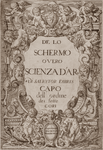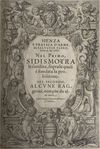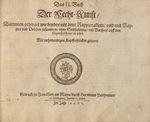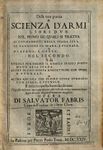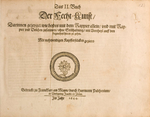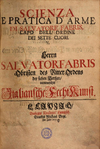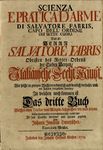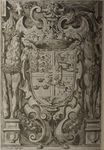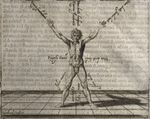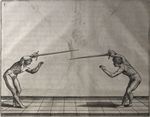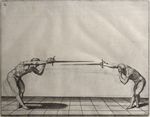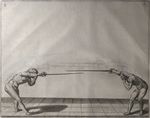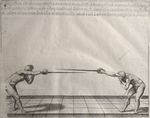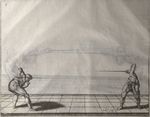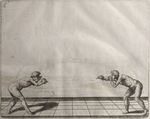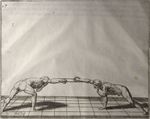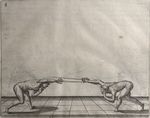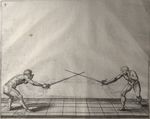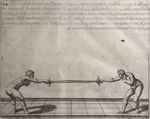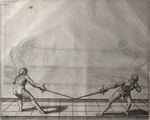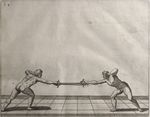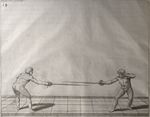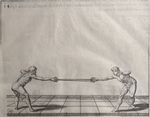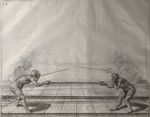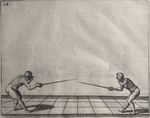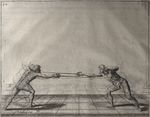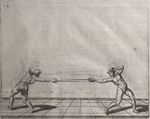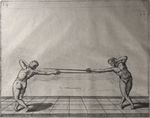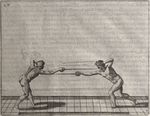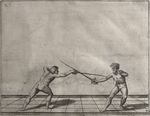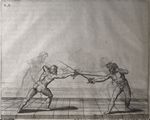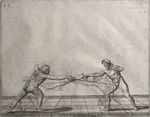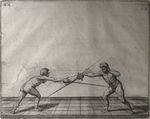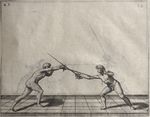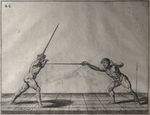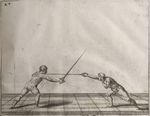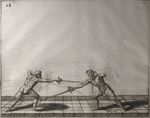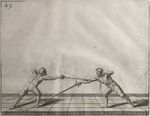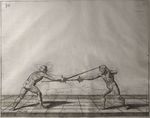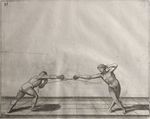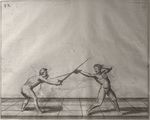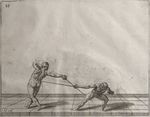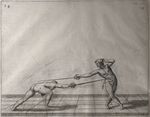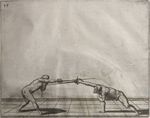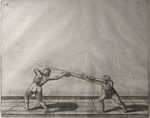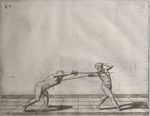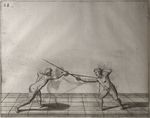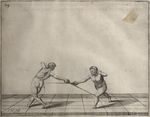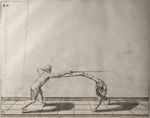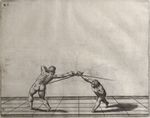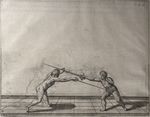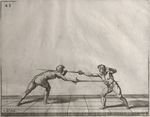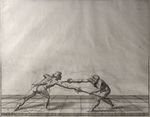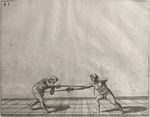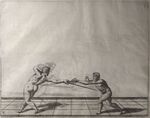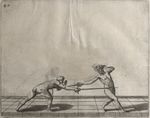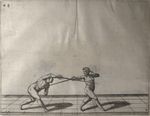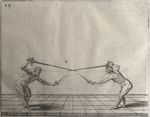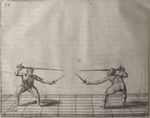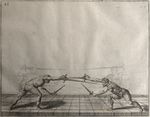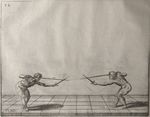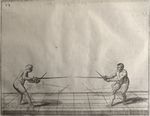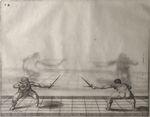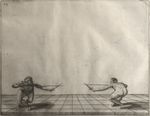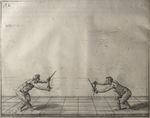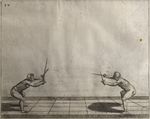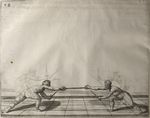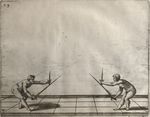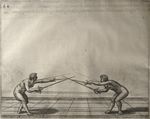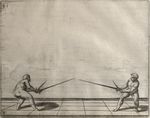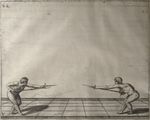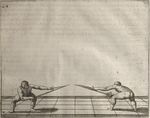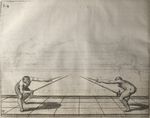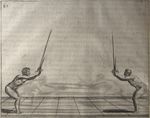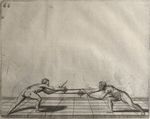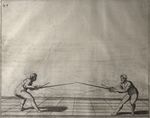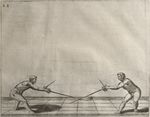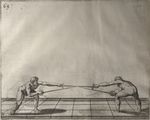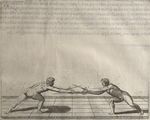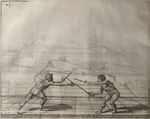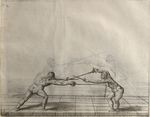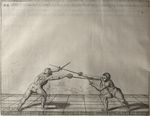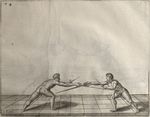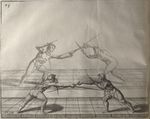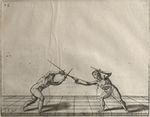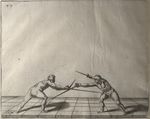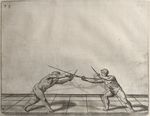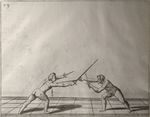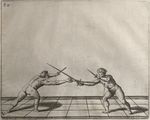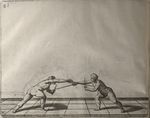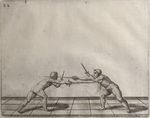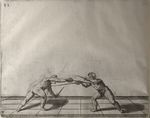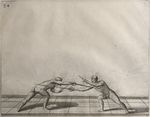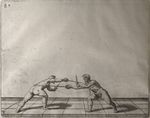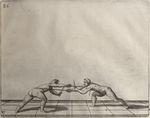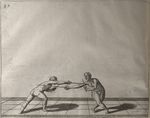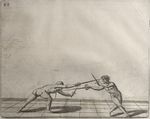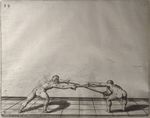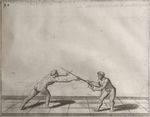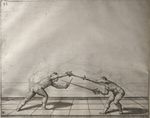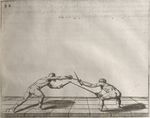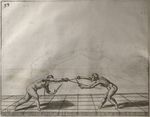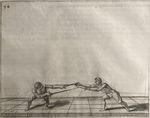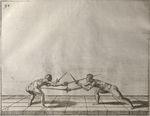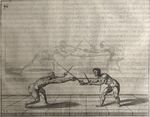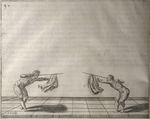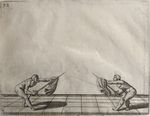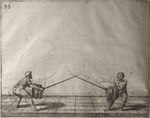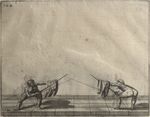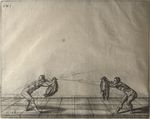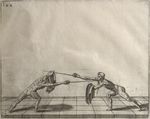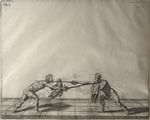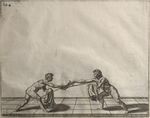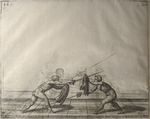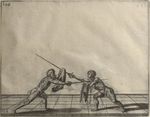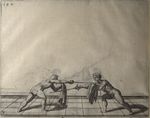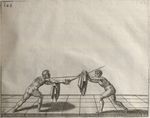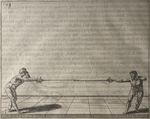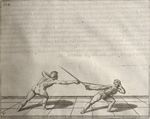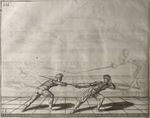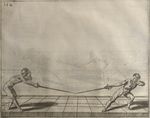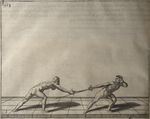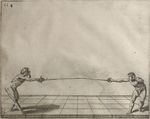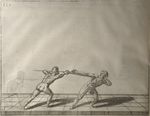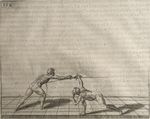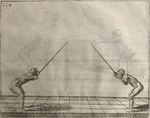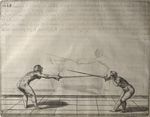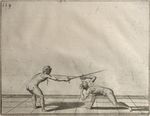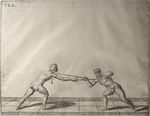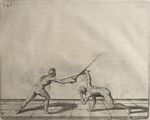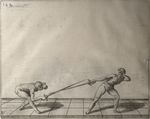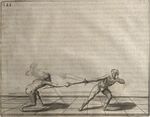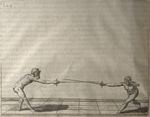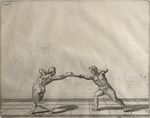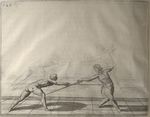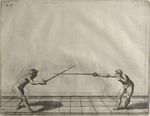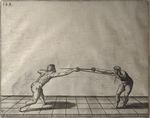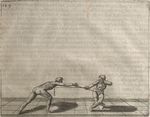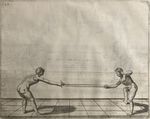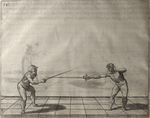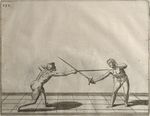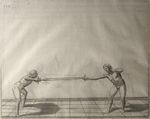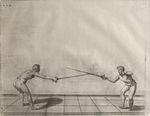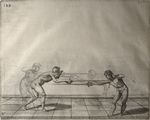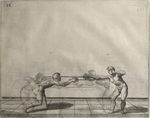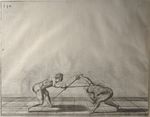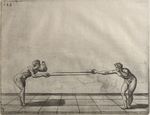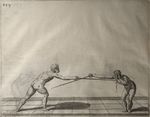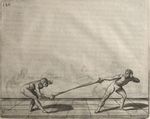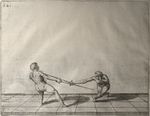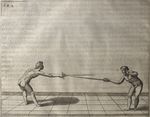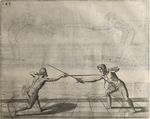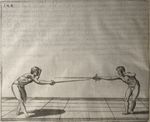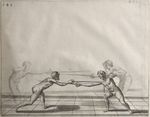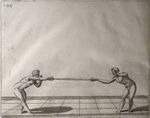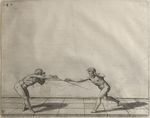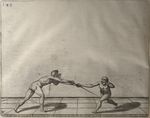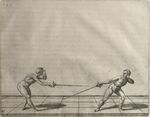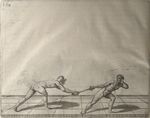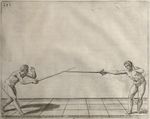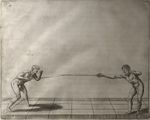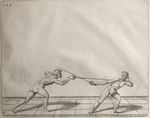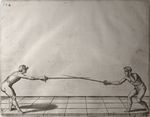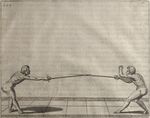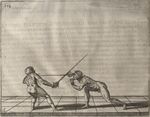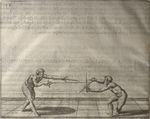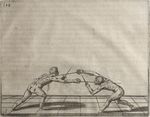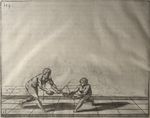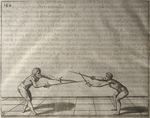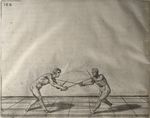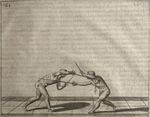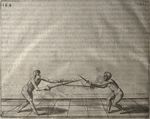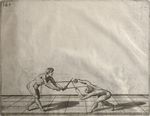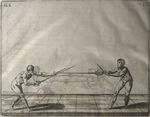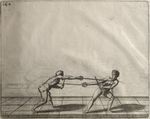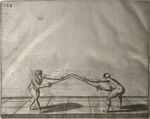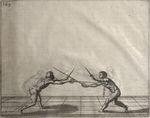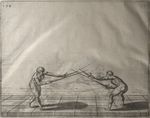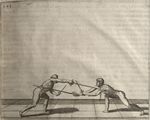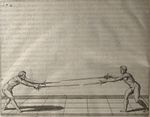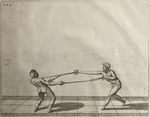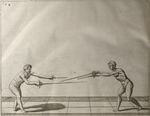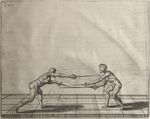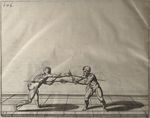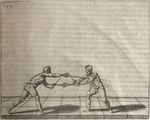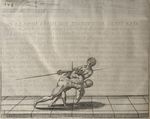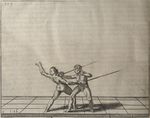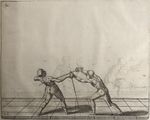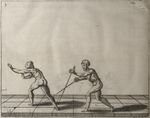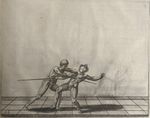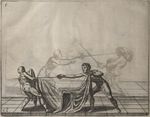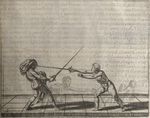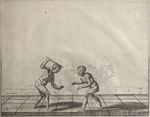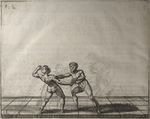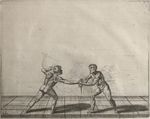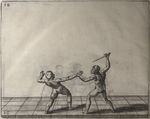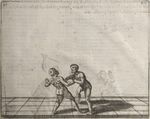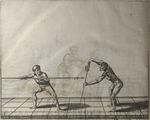|
|
You are not currently logged in. Are you accessing the unsecure (http) portal? Click here to switch to the secure portal. |
Difference between revisions of "Scienza d’Arme (Salvator Fabris)"
| Line 58: | Line 58: | ||
== Publication History == | == Publication History == | ||
| − | ''Scienza d’Arme'' was first printed in Copenhagen, Denmark, in 1606 by [[Henrico Waltkirch]]. It was based on Fabris' earlier manuscript treatise ''[[Scientia e Prattica dell'Arme (GI.kgl.Saml.1868.4040)|Scientia e Prattica dell'Arme]]'' (GI.kgl.Saml.1868.4040) | + | ''Scienza d’Arme'' was first printed in Copenhagen, Denmark, in 1606 by [[Henrico Waltkirch]]. It was based on Fabris' earlier manuscript treatise ''[[Scientia e Prattica dell'Arme (GI.kgl.Saml.1868.4040)|Scientia e Prattica dell'Arme]]'' (GI.kgl.Saml.1868.4040); the text was rewritten in a more flowery style, and the artwork of the manuscript (which was drawn from life) was redrawn in an exaggerated, classical style. It included a title page and portraits engraved by [[Nicolaus Andrea of Flensburg]], heraldry and most illustrations by Christian IV's court artist [[Jan van Halbeeck]], and additional illustrations by [[Francesco Valesio]]. In 1624, Pietro-Paolo Tozzi reprinted the treatise in Fabris' native Padua under the title ''Della vera pratica et scienza d’armi, libri due, pera di Salvatore Fabris''. |
| − | The first translation of Frabris was in 1619, a German edition published in Leiden by Isack Elzevier under the title ''Des Kunstreichen Italiänische Fechtkunst'' ("The Illustrated Italian Art of Fencing"); this version also replaced the elaborate copperplate engravings of the original with rudimentary woodblock figures. This edition was reissued in Nuremberg in ca. 1650. | + | The first translation of Frabris was in 1619, a German edition published in Leiden by Isack Elzevier under the title ''Des Kunstreichen Italiänische Fechtkunst'' ("The Illustrated Italian Art of Fencing"); this version also replaced the elaborate copperplate engravings of the original with rudimentary woodblock figures. This edition was reissued in Nuremberg in ca. 1650. Another German translation was produced in ca. 1635, but was never published and only survived in the [[Fechtkunst aus dem Italienischen (MS Dresd.C.94a)|MS Dresd.C.94a]]. |
| − | Also in 1619, Jacob de Zeter | + | Also in 1619, book II of the treatise received another German translation and its first French translation, which were published in Frankfurt by Jacob de Zeter. This was the first parallel text edition of Fabris' work. Zeter published separate French and German editions titled ''Escrime Novvelle ov Theatre'' ("New Fencing or Theater") and ''Newe Fechtkunst Oder Schawplatz'' ("New Fencing Art or Show Place") respectively, both of which contained both translations of the text.<ref>I'm not aware of any extant copies of the 1619 German edition, but since both editions exist in the 1622 and 1644 reprints, it seems reasonable to assume they were created at the same time.</ref> Zeter also included translations of [[Nicoletto Giganti]]'s 1606 treatise ''[[Scola, overo teatro (Nicoletto Giganti)|Scola, overo teatro]]'', which has oddly lead various fencing historians to accuse Giganti himself of plagiarism.<ref>This accusation was first made by [[Johann Joachim Hynitzsch]], who attributed the edition to Giganti rather than Zeter and was incensed that he gave no credit to Fabris.</ref> This parallel edition was reprinted in 1622 and 1644. |
| − | Fabris' treatise was translated into English by Tom Leoni and published through [[Chivalry Bookshelf]] in 2005 under the title ''Art of Dueling: Salvator Fabris' Rapier Fencing Treatise of 1606''; this was reissued through Lulu.com in 2016. In 2010, it was translated into Spanish by [[Eugenio Garcia-Salmones]] and published under the title ''La esgrima o la ciencia de las armas''. | + | In 1676, [[Johann Joachim Hynitzsch]] published an Italian-German parallel text in Leipzig, Germany, entitled ''Sienza e pratica d’arme''. This edition included yet another German translation by Hynitzsch as well as a preface in which he denigrated all prior German publications on Fabris (specifically mentioning Elzevier's translation, Zeter's translation, and the derivative works of [[Hans Wilhelm Schöffer von Dietz|Hans Wilhelm Schöffer]] and [[Sebastian Heußler]]). Hynitzsch's edition was reprinted in Leipzig in 1713. |
| + | |||
| + | Fabris' treatise was translated into English by Tom Leoni and published through [[Chivalry Bookshelf]] in 2005 under the title ''Art of Dueling: Salvator Fabris' Rapier Fencing Treatise of 1606''; this was reissued through Lulu.com in 2016. In 2010, it was translated into Spanish by [[Eugenio Garcia-Salmones]] and published under the title ''La esgrima o la ciencia de las armas'' ("Fencing, or the Science of Arms"). | ||
== Contents == | == Contents == | ||
Revision as of 15:02, 21 August 2020
| Scienza d’Arme | |
|---|---|
| The Science of Arms | |
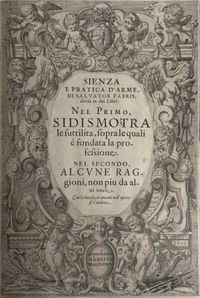 | |
| Author(s) | Salvator Fabris |
| Illustrated by | |
| Place of origin | Copenhagen, Denmark |
| Language | Italian |
| Genre(s) | Fencing manual |
| Publisher | Henrico Waltkirch |
| Publication date | 1606, 1619, 1622, 1624, 1650, 1672, 1676, 1713 |
| First english edition |
Leoni, 2005 |
| Pages | 256 pages |
| Treatise scans |
Digital scans (1606)
|
Sienza e Pratica d’Arme ("Science and Practice of Arms") or De lo Schermo, overo Scienza d’Arme ("On Defense, or the Science of Arms") is an Italian fencing manual written by Salvator Fabris in the 1590s and printed in 1606. It treats the use of the rapier, both solo and in conjunction with the cloak, dagger, and rotella shield; it also discusses unarmed defenses against the dagger. Fabris's treatise is one of the most influential rapier manuals in history, reprinted many times and copied or expanded by numerous other authors.
Contents
Publication History
Scienza d’Arme was first printed in Copenhagen, Denmark, in 1606 by Henrico Waltkirch. It was based on Fabris' earlier manuscript treatise Scientia e Prattica dell'Arme (GI.kgl.Saml.1868.4040); the text was rewritten in a more flowery style, and the artwork of the manuscript (which was drawn from life) was redrawn in an exaggerated, classical style. It included a title page and portraits engraved by Nicolaus Andrea of Flensburg, heraldry and most illustrations by Christian IV's court artist Jan van Halbeeck, and additional illustrations by Francesco Valesio. In 1624, Pietro-Paolo Tozzi reprinted the treatise in Fabris' native Padua under the title Della vera pratica et scienza d’armi, libri due, pera di Salvatore Fabris.
The first translation of Frabris was in 1619, a German edition published in Leiden by Isack Elzevier under the title Des Kunstreichen Italiänische Fechtkunst ("The Illustrated Italian Art of Fencing"); this version also replaced the elaborate copperplate engravings of the original with rudimentary woodblock figures. This edition was reissued in Nuremberg in ca. 1650. Another German translation was produced in ca. 1635, but was never published and only survived in the MS Dresd.C.94a.
Also in 1619, book II of the treatise received another German translation and its first French translation, which were published in Frankfurt by Jacob de Zeter. This was the first parallel text edition of Fabris' work. Zeter published separate French and German editions titled Escrime Novvelle ov Theatre ("New Fencing or Theater") and Newe Fechtkunst Oder Schawplatz ("New Fencing Art or Show Place") respectively, both of which contained both translations of the text.[1] Zeter also included translations of Nicoletto Giganti's 1606 treatise Scola, overo teatro, which has oddly lead various fencing historians to accuse Giganti himself of plagiarism.[2] This parallel edition was reprinted in 1622 and 1644.
In 1676, Johann Joachim Hynitzsch published an Italian-German parallel text in Leipzig, Germany, entitled Sienza e pratica d’arme. This edition included yet another German translation by Hynitzsch as well as a preface in which he denigrated all prior German publications on Fabris (specifically mentioning Elzevier's translation, Zeter's translation, and the derivative works of Hans Wilhelm Schöffer and Sebastian Heußler). Hynitzsch's edition was reprinted in Leipzig in 1713.
Fabris' treatise was translated into English by Tom Leoni and published through Chivalry Bookshelf in 2005 under the title Art of Dueling: Salvator Fabris' Rapier Fencing Treatise of 1606; this was reissued through Lulu.com in 2016. In 2010, it was translated into Spanish by Eugenio Garcia-Salmones and published under the title La esgrima o la ciencia de las armas ("Fencing, or the Science of Arms").
Contents
| 1 - 76 | Book 1 part 1 - Rapier by Salvator Fabris |
|---|---|
| 76 - 133 | Book 1 part 2 - Rapier and dagger by Salvator Fabris |
| 134 - 149 | Book 1 part 3 - Rapier and cloak by Salvator Fabris |
| 151 - 218 | Book 2 part 1 - Rapier by Salvator Fabris |
| 218 - 242 | Book 2 part 2 - Rapier and dagger by Salvator Fabris |
| 243 - 256 | Book 2 part 3 - Grappling, dagger, and cloak |
Gallery
Title pages
Illustrations
Additional Resources
- Fabris, Salvator and Leoni, Tom. Art of Dueling: Salvator Fabris' Rapier Fencing Treatise of 1606.
- First Edition: Highland Village, TX: Chivalry Bookshelf, 2005. ISBN 1-891448-23-4
- Second Edition: Lulu.com, 2016.
- Fabris, Salvator and Garcia-Salmones, Eugenio. La esgrima o la ciencia de las armas: Libro primero, 1606. Editorial Sacauntos, 2010. ISBN 978-84-937207-8-0
- Fabris, Salvator and Garcia-Salmones, Eugenio. La esgrima o la ciencia de las armas: Libro segundo, 1606. Editorial Edizer, 2011. ISBN 978-84-938120-8-9
References
- ↑ I'm not aware of any extant copies of the 1619 German edition, but since both editions exist in the 1622 and 1644 reprints, it seems reasonable to assume they were created at the same time.
- ↑ This accusation was first made by Johann Joachim Hynitzsch, who attributed the edition to Giganti rather than Zeter and was incensed that he gave no credit to Fabris.
Copyright and License Summary
For further information, including transcription and translation notes, see the discussion page.
| Work | Author(s) | Source | License |
|---|---|---|---|
| Images | Nicolaus Andrea of Flensburg, Jan van Halbeeck, Francesco Valesio | Fægtekunstens Venner | |
| Transcription | Index:Scienza d’Arme (Salvator Fabris) |

